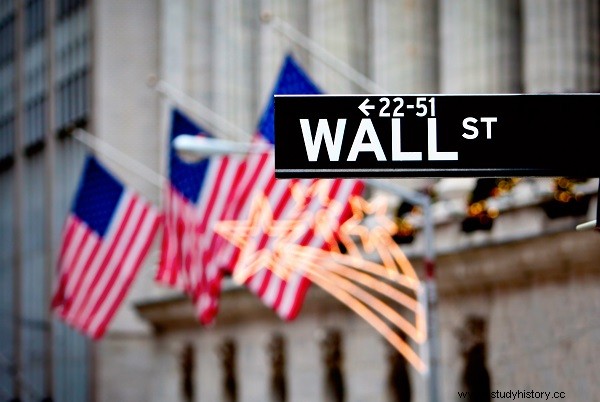
Daily, the news informs us about the variations of the indexes of the economy offering data on the main global financial institutions. However, we never got to question the origin of those conglomerates, having the impression that all the power and the amounts of money that circulate there were always there, dictating and establishing the not always so understandable trends of the world economy.
In the case of United States , these large institutions are concentrated on Wall Street , Manhattan region which concentrates the most important North American banks and stock exchanges. However, that street, which today is one of the nerve centers of the capitalist economy, did not always have its name linked to large amounts of money and the agitation of the deals of financial agents. This leaves the question:what importance was Wall Street before the consolidation of the capitalist economy?
Actually, the history of “Rua do Muro” was linked to the colonization process ofNorth America , specifically at a time when Dutch, indigenous and British populations were vying for dominance over lands located on the East Coast . The first settlers to undertake the invasion of that space were the Dutch, who founded the village of New Amsterdam , which in its early years had a population of approximately 270 settlers .
However, this occupation process was far from peaceful, as the natives' resistance against the Europeans represented an obstacle to the Dutch colonial project. Faced with this threat, the Dutch of New Amsterdam decided to build, in 1640, a barrier capable of containing the attacks organized by the neighboring indigenous populations. Despite all the pertinence of preventive action, the Dutch were not able to face the ambition of other enemies who would arrive by sea.
In the year 1664, the English promoted the invasion of New Amsterdam and after expelling the Dutch from the region, founded the village of New York . Over time, a traffic lane was opened that followed the contour of the wall, which ended up giving its name to the famous street in question . Over time, the expansion of British colonization and the control of indigenous attacks established the collapse of the Dutch wall and the permanence of the British street.
It is interesting to note that, if we were to admit such a belief, we could point out that Wall Street has always been inclined towards the business world. In the early days of the North American mercantile economy, Wall Street was a meeting point for several merchants and carriers who negotiated different shipping contracts with each other. The current financial and speculative function of the street only became known at the end of the 18th century, when capitalism took its steps outside England.
In 1792, a group of twenty-four shareholders entered into an agreement that established the rules and fees for trading on the New York Stock Exchange . This first agreement was called the Treaty of Buttonwood , named after a tree that grew at the end of Wall Street. From then on, Wall Street concentrated around its name the possibility that it would ruin and establish fortunes overnight. After the Crisis of 1929 , that simple street brought great trauma to several speculators.
After World War II (1939 – 1945), the US economy managed to recover from the traumas of the 1930s. With this change, Wall Street regained its importance for international financial capitalism. However, demonstrating the constant movement of history, the crisis that haunted the North American economy in 2008 brought back the fears and bad memories that “Wall Street” once represented.
